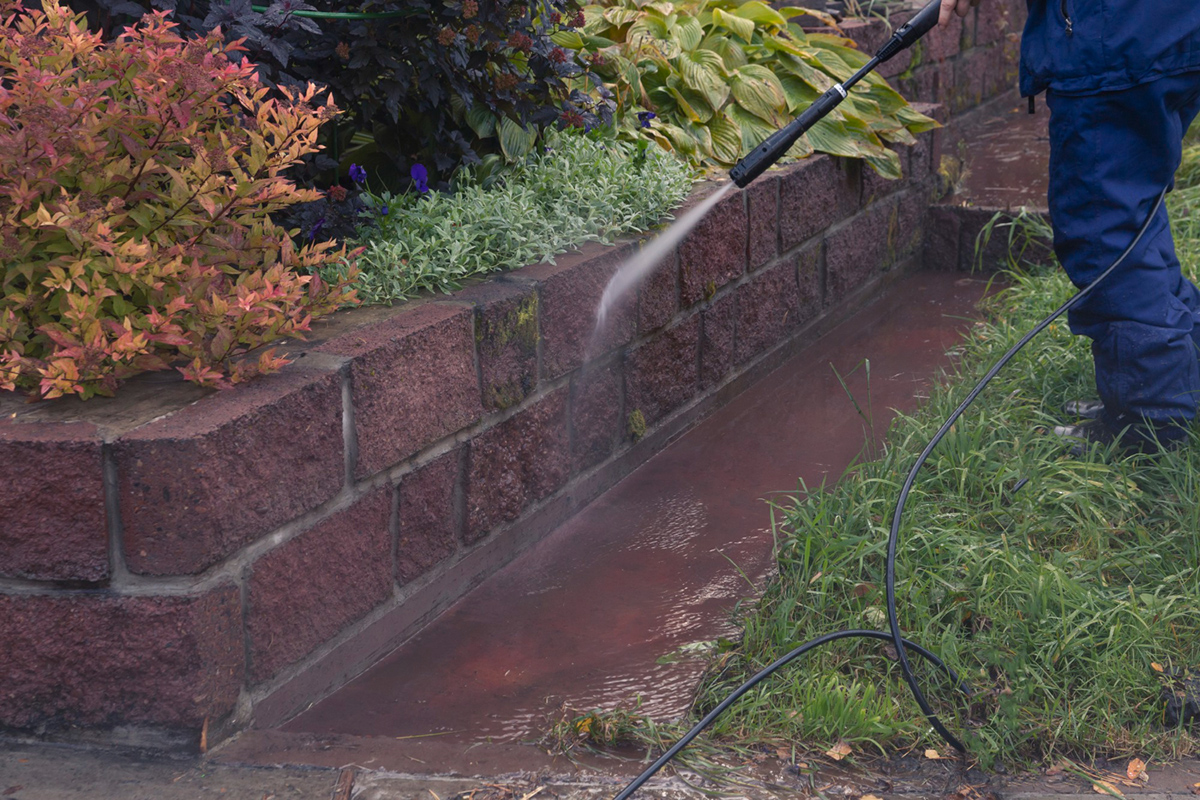Pressure cleaning is a powerful cleaning process that can renew the look of your property and improve its lifespan. Yet, while the benefits of pressure washing are notable, it is crucial to approach this task with consideration. Understanding the fundamentals of pressure washing and emphasizing safety can help you protect both yourself personally and your home from potential injury.

In this guide, we will explore what pressure washing consists of, the positives of hiring professionals, and the distinctions between multiple washing techniques. Regardless of whether you plan to tackle the job independently or seek the help of an professional, knowing the crucial safety precautions will ensure a satisfactory and damage-free cleaning session. From addressing stubborn mold and mildew to improving your home’s aesthetic appeal, we’ll discuss all you need to know about pressure washing in a safe manner.
Grasping High-Pressure Cleaning
High-pressure cleaning is a cleaning method that utilizes pressurized water spray to get rid of stains, contaminants, fungus, and other impurities from exteriors. This approach is singularly effective for removing dirt from various outdoor areas of a home or commercial property, including parking areas, sidewalks, decks, and siding. The equipment used in power washing can differ in pressure output, enabling different applications based on the cleaning surface and the amount of dirt.
One of the key benefits of high-pressure cleaning is its power to renew the aesthetic of dirtied exteriors that have become unattractive over time due to the buildup of pollutants and natural growth. By employing forceful water, this method can swiftly and efficiently eliminate stubborn stains and restore the initial splendor of materials. This is particularly beneficial advantageous for homeowners looking to boost their house’s visual attractiveness or for establishments wanting to preserve a clean and inviting exterior.
It is crucial to understand the contrast between high-pressure cleaning and gentler cleaning techniques, such as low-pressure washing. While power washing applies intense water jets to clean materials, gentle washing employs milder pressure alongside tailored soaps. This makes gentle washing more fitting for delicate surfaces, such as roofs or wooden patios, which could be harmed by the high-force water being used in pressure washing. Understanding these methods helps in formulating informed determinations about the best cleaning approach for multiple exteriors.
Deciding Between DIY and Professional Services
When thinking about pressure washing for your property, one of the first decisions you'll need to decide is whether to tackle the job yourself or engage a specialized service. A DIY approach can be tempting, especially for those who enjoy practical tasks and aim to save costs. However, https://competent-mango-nq7xpw.mystrikingly.com/blog/surface-cleaning-beyond-clean-surfaces requires thorough planning, the appropriate equipment, and a solid understanding of pressure washing approaches to avoid potential damage to your premises. Proper protective equipment is also necessary to protect yourself from the high-pressure water and cleaning chemicals involved in the task.
On the contrarily, professional pressure washing services offer many advantages that may warrant the investment. Professionals come armed with premium machines and specialized cleaning solutions tailored for different surfaces, ensuring safe cleaning. Furthermore, they have the knowledge to tackle multiple challenges, such as removing tough stains or dealing with fragile materials that require a softer approach. This can free up you hours and provide assurance knowing the job is done right.
Ultimately, the choice between DIY and professional pressure washing should consider various factors, including your proficiency, the complexity of the job, and the possible risks involved. While DIY can be a rewarding and cost-effective option for lesser tasks, expert services may be more appropriate for more complex projects. Determining your specific needs and capabilities will assist you make the right decision for your home.
Advice for Proper Pressure Washing
High-pressure cleaning can be an efficient way to wash your property, but precautions should always come first. Wearing suitable personal protective equipment is crucial. This includes eye protection to protect your eyes from hazards, gloves to shield your hands from the pressure, and non-slip shoes to prevent slips. If you're using a stepladder, ensure that it is firm and that someone is there to hold it for greater safety. It's also wise to wear long sleeves and pants to protect your body from both the powerful water and any chemicals.
Before you start pressure washing, make sure to check the area thoroughly. Look for any loose materials that could become detached during cleaning. Be careful around electrical outlets and fixtures, as water and electricity can be a risky combination. Additionally, if you're washing surfaces that could easily be damaged, such as wood or painted areas, adjust the settings accordingly. Always sample a small, unnoticeable area first to ensure that the pressure is appropriate for the surface you are working on.
Finally, always be mindful of your surroundings while pressure washing. Avoid working on blustery days, as this can cause debris to blow back at you or diminish your cleaning efficiency. Keep children and pets away from the workspace to prevent injuries. Following these safety tips can enhance your pressure washing experience, ensuring that the job is done effectively and without compromising your well-being or that of your property.
